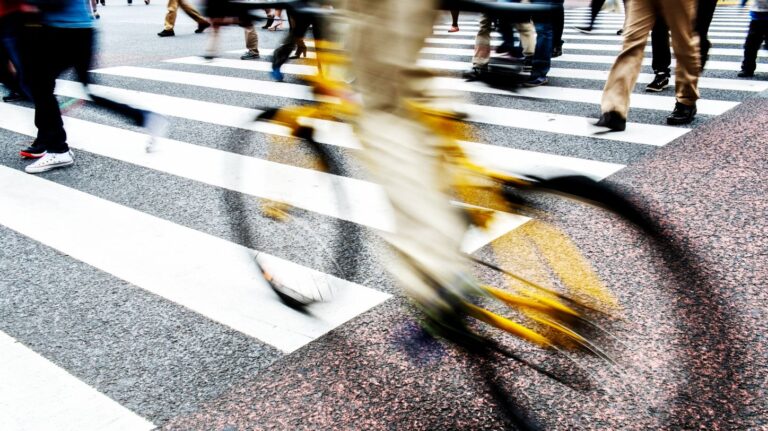Encouraging walking, cycling and public transport use requires a cohesive, collaborative approach by all involved. The latest University of Canterbury travel survey shows how effective it can be.
Around the world, people are being encouraged to travel by foot, bike or public transport rather than by car. The reasons are many and varied: to mitigate climate change, pollution, traffic congestion and infrastructure costs, and to improve health and wellbeing.
But in New Zealand, despite efforts by governments, councils and individuals, sustained increases in the use of alternative modes of transport remain elusive.
Often this is a result of policies being implemented in isolation. The challenge, therefore, is to develop a more cohesive approach to transport planning, based on research, and applied appropriately depending on the context.
One recent example of how this can succeed is documented in a four-yearly survey conducted by the University of Canterbury to identify travel trends among staff and students.
The survey also asks about the main barriers to switching from driving, which helps inform policies to encourage more sustainable travel options. This year’s results show particular promise.
Driving in decline
The university is located four kilometres to the west of the centre of Christchurch, a city of 400,000 people in New Zealand’s South Island.
There are currently just over 24,000 students (up from around 12,000 20 years ago) and 6,000 full-time and part-time staff. An estimated 15,000 people travel to the university on a typical day.
Like many workplaces in low-density, car-dominated cities, the university saw a gradual increase in people driving to work in the 1980s and 1990s. The university has since tried to encourage staff and students to use public transport, or to walk, cycle and car-share.
The 2024 travel survey found the number of people driving to university has declined since 2020: 38% of those surveyed drove to campus, 21% cycled, 20% walked and 15% came by bus.
Staff are cycling more, mainly due to an increase in e-bike use. Electric vehicle use has also increased substantially. There was a big drop in students using cars, and a correspondingly large increase in bus travel.
The reasons for this decline in car travel, and what we can learn from it, demonstrate the interconnected nature of effective transport policy.
Cycling and buses
Christchurch City Council is responsible for roads and cycle infrastructure. Over the years, it has invested significant effort and resources in creating cycle infrastructure, mainly based around a series of major cycleways.
This includes the Uni-Cycle cycleway which links the university to the central city, and the Nor’West Arc cycleway which also goes through the university. The investment in these routes has seen a substantial growth in cycling in general, including to the university.
The regional council, Environment Canterbury, is responsible for public transport. The recent adoption of a low-cost, flat-fare scheme (NZ$2 adult fares and $1 concession fares) saw an increase in bus patronage.
Local research showed these lower-cost fares were especially important for people on low incomes, so the previous government’s inclusion of concessions for people under 25 was important in encouraging student bus use to university.
The travel survey showed cost as a barrier to students using the bus dropped from 30% in 2020 to 10% in 2024, suggesting the cheap bus fares were working. Sadly, the under-25 concession has been reversed by the current government.
To pay the cheaper fares, students will now have to be eligible (and apply) for a Community Services Card. Under another central government policy, bus fares will increase in mid-2025.
Incentives and disincentives
At the campus level, the university has implemented a number of policies to encourage active and public transport use:
- paid parking was introduced in 2003, initially costing $40 per year but now $1,000 for staff and $500 for students, and there is no free parking (even the vice chancellor pays)
- secure bike parking is provided, as well as bike repair stations and air pumps, and free shower and changing facilities
- on-campus bike repair is available, with an expanded repair and recycle scheme being investigated in response to 16% of students telling the travel survey that bike availability and cost were barriers
- free cycle skills workshops have been established, with a cycle safety workshop scheduled for March 2025.
The university also works closely with both councils, and collaborated on the development of bus routes, the Uni-Cycle cycleway, and has negotiated over parking requirements.
Lessons from the survey
The success in reducing car use for university travel lies in three main areas:
- Good local transport policy and planning: local government has been committed to making it easier for people to choose not to drive by providing good cycle infrastructure and cheap bus travel. Until recently, this was supported and funded by central government.
- Employer action and commitment: the university has passed on the cost of parking to those who drive, and invests in initiatives to encourage walking, cycling and bus travel to campus.
- Close collaboration: the university and local councils have worked closely to make walking, cycling and taking public transport as easy and attractive as possible.
Overall, cohesive policies and planning – informed by research, appropriate to the context, and developed collaboratively – can encourage people out of their cars.![]()
This article was authored by Simon Kingham, Professor of Human Geography, University of Canterbury and Matt Morris, Sustainability Manager, University of Canterbury. It is republished from The Conversation under a Creative Commons license. Read the original article.





